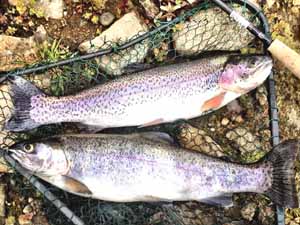The Capelin fish is a small forage fish of the smelt family. It is also called Caplin, and found in the North Atlantic, Arctic and North Pacific Oceans. Currently it is extremely abundant in the Arctic parts of the North Atlantic and forms a major constituent of many larger fishes, sea birds and cetaceans (as well as the human inhabitants of the region). However, read some more information about this fish species below.
Capelin Fish Characteristics
The Capelin fish has an elongate body, which is somewhat compressed. Their body is covered with very small, cycloid scales. They have a little pointed snout. Their upper jaw is reaching to about the eye center, and the lower jaw is projecting. Teeth on the jows are small. The dorsal fin origin behind midpoint of body and about over pelvic fin bases.
Coloration on their back is transparent olive to bottle green. The sides are silvery and the belly is silvery-white. The edge of the scales have dusky specks. Average body length of the mature male Capelin fish is around 20 cm, and up to 25.2 cm for the females. Average live body weight of these fish is around 52 grams. Photo and info from FAO and Wikipedia.

Diet
The Capelin fish are feed almost exclusively on small planktonic crustaceans. They generally feed on the plankton-rich oceanic area between Iceland, Greenland and Jan Mayen.
Breeding
The Capelin fish start spawning at their age of between 2 and 6 years. They generally spawn in late spring and early summer in large groups in the shoreline, or in very shallow water.
They lay adhesive eggs on beaches and banks. The eggs are buried in the gravel and hatch in 2 to 3 weeks. They have an extremely high mortality rate on the beaches after spawning, and for males it is close to 100 percent. On an average, the females can lay between 6,000 and 12,000 eggs per spawning.
Uses
The Capelin fish is appreciated as food. But it is mainly used for fishmeal and oil industry products.
Special Notes
The Capelin fish is an important forage fish, and is essential as the key food of the Atlantic cod. It is commercially used for producing fishmeal and oil, but is also appreciated as food.
The flesh of this fish is agreeable in flavor, resembling herring. Capelin roe is considered as a high-value product. The females are valued for their roe, and the males are utilized as fishmeal. Average lifespan of this fish is up to 5 years. However, review full breed profile of the Capelin fish in the table below.
| Name | Capelin |
| Kingdom | Animalia |
| Phylum | Chordata |
| Class | Actinopterygii |
| Order | Osmeriformes |
| Family | Osmeridae |
| Genus | Mallotus |
| Species | M. villosus |
| Binomial Name | Mallotus villosus |
| Other Names | Also known by many other different names in different parts of the world |
| Breed Purpose | Mainly food, but also used for making fishmeal, and oil |
| Special Notes | Economically very important fish species where it is found, important forage fish, essential as the key food of the Atlantic cod, commercially used for making fishmeal and oil, but also appreciated as human food, flesh is agreeable in flavor, the roe is considered as a high-value product, up to 5 years average lifespan |
| Weight | About 52 grams |
| Breeding Method | Natural |
| Climate Tolerance | Native climates |
| Body Color | Transparent olive to bottle green back, and the sides and belly is silvery-white |
| Rarity | Common |
| Availability | Worldwide |





